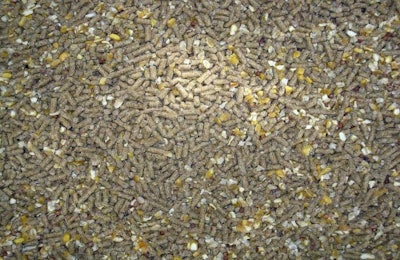
Compound feed production in the 28 countries of the European Union (EU-28) is estimated to have been 156.1 million metric tons (mmt) in 2015, just 0.2 percent more than the previous year (155.8 mmt), according to the European Feed Manufacturers’ Association (FEFAC).
Good harvests in the EU in 2015 and adequate supplies of oilseeds on the global market helped to keep feed costs generally lower than in 2014.
Feed for poultry was the largest segment of the EU market in 2015 at 52.7 mmt, representing an increase of 2 percent from the previous year. FEFAC attributed this to a 2.5 percent increase in poultry meat consumption across the region in 2015.
At 49.2 mmt, pig feed output was unchanged from the previous year. This was achieved despite an economic incentive for pig producers to use their own cereals, and resulted from the counterbalancing effects of falling pig prices with a 1 percent rise in EU pig meat output.
For cattle feed, the overall picture can mask contrasting fortunes across Europe regarding the effects of weather conditions on forage availability. For the EU-28, cattle feed production was down 1 percent in 2015 at an estimated 42.1mmt. The ending of milk quotas, therefore, has had little impact of compound feed requirements so far.
For individual countries, FEFAC data highlights Poland as having the highest annual expansion in compound feed output in 2015 of 4 percent, largely due to an increase in poultry meat production that has put the country at the top of the EU rankings for poultry meat output. Germany has strengthened its position as the region’s top compound feed producer. It and other countries at the top of the feed “league table” reported little change in output in 2015 compared with the year before.
Looking ahead to 2016, FEFAC market experts are somewhat pessimistic about industrial compound feed production in the EU. They forecast a continued rising trend for poultry feed but at a slower rate of 1 percent. Pig feed demand is likely to fall between 2 and 3 percent, reflecting a decline in pig meat output. With weather conditions in northern Europe so far favorable for forage production, a fall of 1 percent is predicted for cattle feed. These changes point to an overall 0.5 percent decrease in EU compound feed production in 2016 compared with 2015.
Several factors could affect these predictions, FEFAC warns. In terms of prices, a downward trend has been in place since 2013 but the recent drought in northeastern Brazil could adversely impact the 2016 soybean harvest.

















